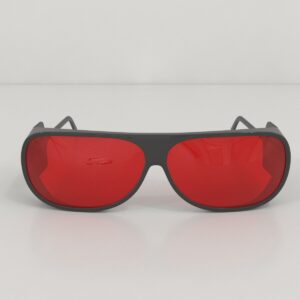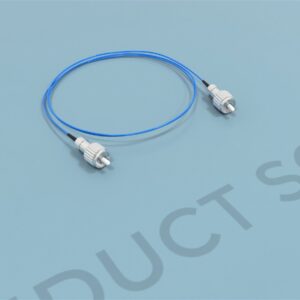Four navigational beacons hover 25 cm above the water’s surface, with one always directly above the concealed platform. This platform consistently resides within the designated target quadrant of the pool. Positioned along the central radius of this quadrant, the platform can assume one of three distinct configurations labeled B, C, D, and E.
Contrary to findings in humans, wherein hippocampal damage leads to temporally graded retrograde amnesia, experiments on rats utilizing the Morris water maze have demonstrated that lesions within the hippocampus equally impair recent and remote spatial memory.
Clark et al. (2007) introduced modifications to the conventional water maze paradigm, incorporating navigational beacons to guide rats during their search. This departure from a purely spatial strategy, as seen in the standard Morris Water Maze, marks a notable shift in experimental methodology.

MazeEngineers empowers preclinical neuroscience research with meticulously designed, customizable behavioral apparatuses. From manual classic mazes to fully automated smart systems, we provide the tools scientists need to capture high-quality, reproducible data for studies on learning, memory, anxiety, and depression.




Advancements in spatial memory and navigation research have spurred the development of the Multiple Beacon Maze, presenting a fresh twist to the classical Morris water maze (Morris, 1984) and enabling more precise testing methodologies tailored to various facets of spatial behavior.
This innovative maze retains the foundational structure of the traditional water maze while integrating additional beacon elements positioned above the apparatus. During training sessions aimed at reaching an escape platform, subjects also learn to associate one of four identical beacons with the platform’s specific location, delineating not only the quadrant but also the precise area within that quadrant. Consequently, rodents must acquire spatial information to select the correct beacon before swimming towards it, alleviating the need for intricate navigation or continuous tracking of the beacon’s position within the maze.
The utilization of multiple beacons, each linked to the escape platform’s whereabouts, offers a means to assess spatial memory independently of navigational prowess (Clark et al., 2007). Through pre-training associations between beacons and platform locations, rodents shift away from spatial strategies, relying instead on knowledge regarding the platform’s position relative to the designated beacon to navigate the task. With its supplementary components, the Multiple Beacon Maze facilitates the evaluation of rodents based on spatial memory, untethered from navigational capabilities.
The multiple-beacon maze configuration comprises four indistinguishable beacons, each equipped with adjustable bulbs, strategically positioned above the conventional Morris water maze apparatus. Within the opaque water-filled tank, partitioned into four quadrants, a beacon is fixedly suspended 25 cm above the water’s surface in every quadrant. Concealed within the target quadrant, an escape platform remains camouflaged, its placement variable along the medial, intermediate, and lateral positions along the quadrant’s central radius.
Throughout the behavioral training phase, rodents undergo acclimatization to standard water maze protocols, learning to navigate towards a concealed escape platform under the guidance of overhead beacons. In each initial trial, subjects freely traverse towards the target quadrant, and upon approaching within 20 cm of the hidden platform, it ascends from a submerged to an accessible position.
Throughout each trial, the placement of both the escape platform and its corresponding guiding beacon within the target quadrant is pseudo-randomized, ensuring a varied learning experience. Rodents are initially compelled to linger near or within the target vicinity before reinforcement occurs through the emergence of the escape platform, facilitating correct identification and spatial learning of the specific location. The progression of spatial learning is meticulously monitored throughout training sessions employing Noldus Ethovision XT software.
Prior studies in spatial memory have delved into various realms, including investigations into brain lesions within the hippocampus, pharmacological interventions, and other avenues. Following the completion of behavioral training utilizing the multiple-beacon maze, rodents are typically categorized into experimental and control cohorts for subsequent testing phases.
Evaluation of rodent performance hinges on two key variables. Firstly, the percentage of time spent within the target quadrant, where the escape platform was initially located during pre-trials, offers insights into the integrity of the rodent’s spatial memory. Secondly, documentation of the percentage of time spent beneath the target beacon, relative to alternative locations within the quadrant, provides an indication of the rodent’s retention of beacon-guided navigation towards the escape platform.
Data collection can be accomplished through manual recording using a timer or through the utilization of video tracking systems such as Noldus Ethovision XT, ensuring accurate and detailed assessment of rodent behavior.
The multiple-beacon maze presents a versatile platform for exploring diverse facets of spatial navigation, categorically differentiating between various cognitive processes (O’Keefe and Nadel, 1978), including the mapping of locations and associative stimulus-response learning (Timberlake et al., 2007). Notably, it has emerged as a valuable instrument in investigating the impact of hippocampal lesions on spatial memory and navigational proficiency, facilitating nuanced insights into these cognitive domains.
The depicted sample data is illustrated through a graph plotting the mean percentage of time spent beneath the guiding beacon during medial, intermediate, and lateral trials by both lesioned and non-lesioned mice. Analysis of the graph reveals a notable discrepancy between the two groups, with the lesioned cohort displaying markedly impaired performance compared to the control group. These findings strongly indicate that mice with lesions exhibit a reduced inclination to utilize the beacons as navigational aids for locating the escape platform’s position.
The integration of guide beacons within the multiple-beacon maze facilitates the nuanced assessment of spatial memory and navigational proficiency, parsing these cognitive dimensions into distinct components. One notable advantage inherent in the design of the multiple-beacon maze lies in the spatial cues provided by the guide beacons, which afford rodents with spatial information separate from the navigational aspect of the task, wherein rodents monitor their movements throughout space.
Furthermore, the multiple-beacon maze confers an additional advantage in terms of learning efficacy experienced by rodents. Insights gleaned from Clark et al.’s (2007) investigation into hippocampal function and spatial memory underscore the unique benefits afforded by the multiple-beacon setup, unavailable in conventional Morris water maze configurations. Consequently, rodents trained within the multiple-beacon maze exhibit significantly enhanced performance compared to their counterparts trained using standard water maze protocols.
Clark, R. E., Broadbent, N. J., & Squire, L. R. (2007). The hippocampus and spatial memory: findings with a novel modification of the water maze. Journal of Neuroscience, 27(25), 6647-6654.
Timberlake, W., Sinning, S. A., & Leffel, J. K. (2007). Beacon training in a water maze can facilitate and compete with subsequent room cue learning in rats. Journal of Experimental Psychology: Animal Behavior Processes, 33(3), 225.
O’keefe, J., & Nadel, L. (1978). The hippocampus as a cognitive map. Oxford: Clarendon Press.
There are no questions yet. Be the first to ask a question about this product.